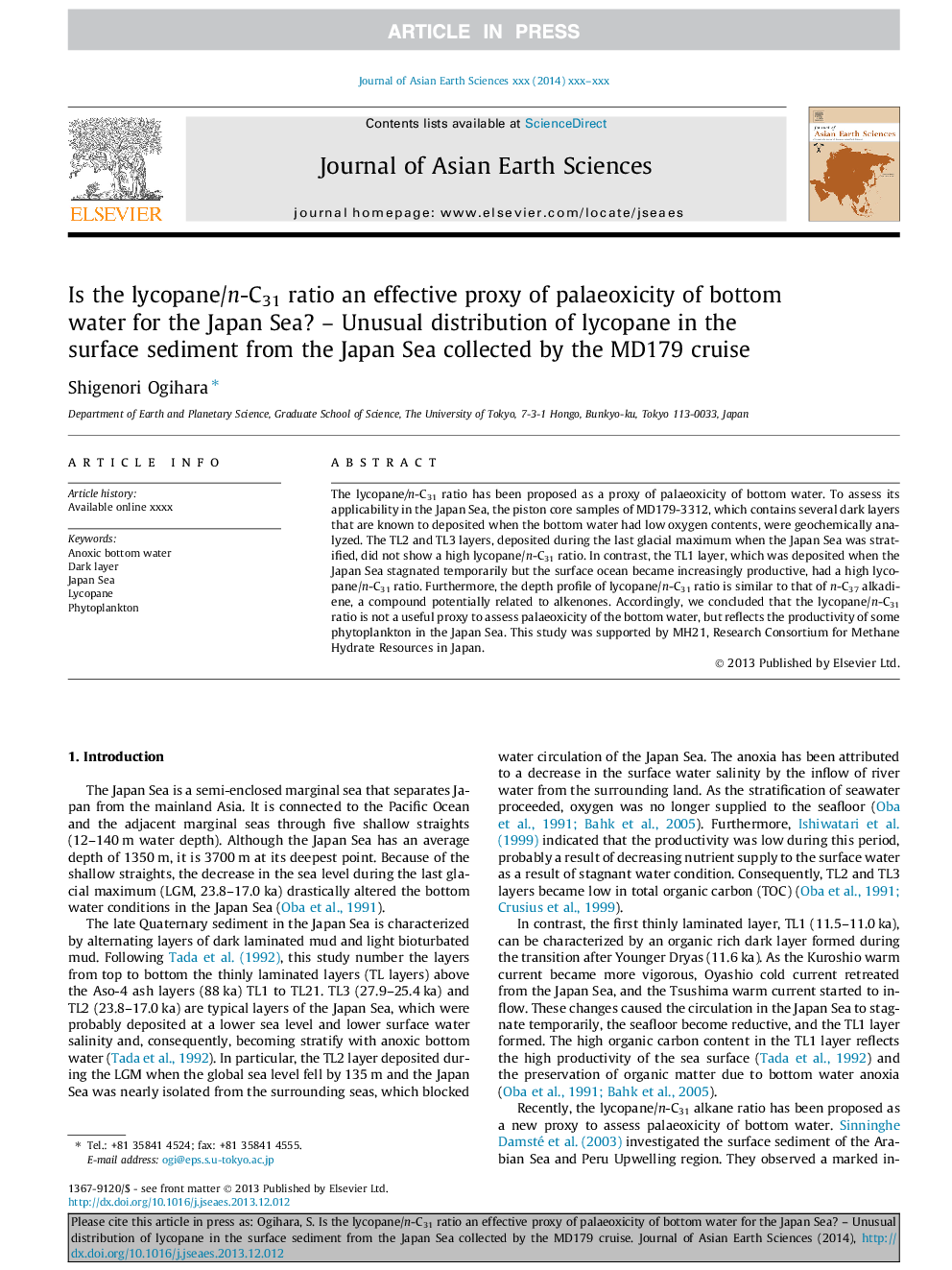| Article ID | Journal | Published Year | Pages | File Type |
|---|---|---|---|---|
| 6444459 | Journal of Asian Earth Sciences | 2014 | 4 Pages |
Abstract
The lycopane/n-C31 ratio has been proposed as a proxy of palaeoxicity of bottom water. To assess its applicability in the Japan Sea, the piston core samples of MD179-3312, which contains several dark layers that are known to deposited when the bottom water had low oxygen contents, were geochemically analyzed. The TL2 and TL3 layers, deposited during the last glacial maximum when the Japan Sea was stratified, did not show a high lycopane/n-C31 ratio. In contrast, the TL1 layer, which was deposited when the Japan Sea stagnated temporarily but the surface ocean became increasingly productive, had a high lycopane/n-C31 ratio. Furthermore, the depth profile of lycopane/n-C31 ratio is similar to that of n-C37 alkadiene, a compound potentially related to alkenones. Accordingly, we concluded that the lycopane/n-C31 ratio is not a useful proxy to assess palaeoxicity of the bottom water, but reflects the productivity of some phytoplankton in the Japan Sea. This study was supported by MH21, Research Consortium for Methane Hydrate Resources in Japan.
Keywords
Related Topics
Physical Sciences and Engineering
Earth and Planetary Sciences
Geology
Authors
Shigenori Ogihara,
